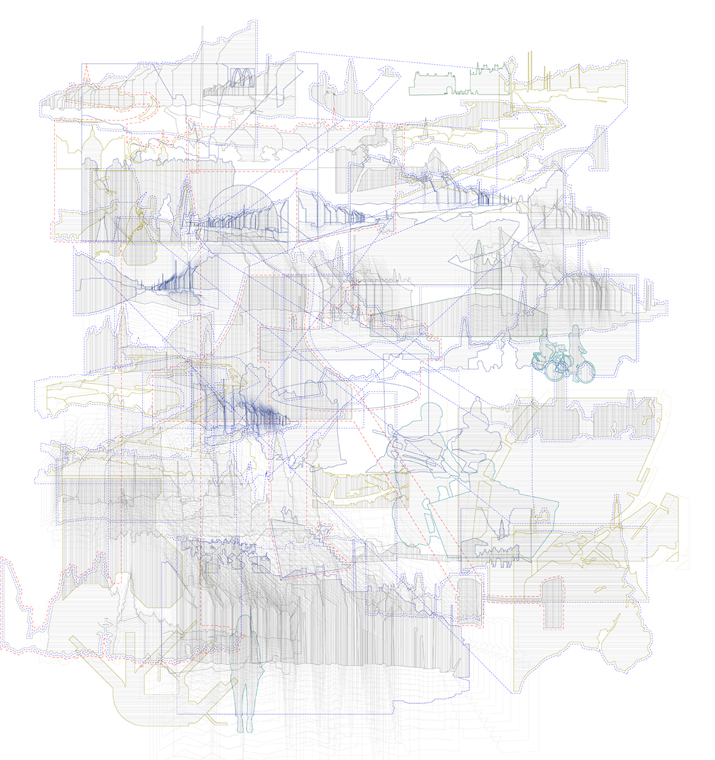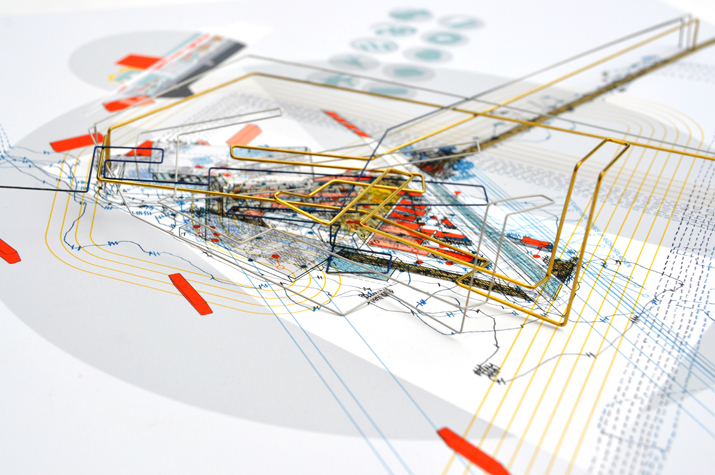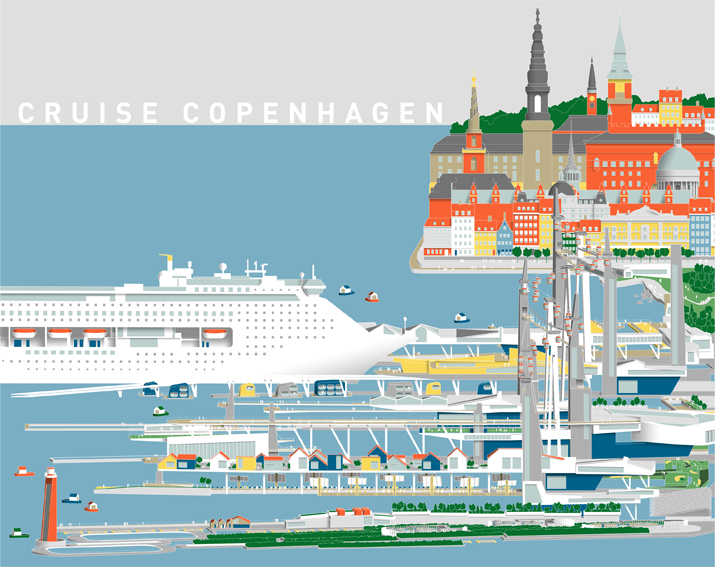EDITING COPENHAGEN | Copenhagen, Denmark | Unit 21 | 2014
CRUISE COPENHAGEN | Copenhagen, Denmark | Unit 21 | 2014
Awarded Distinction for Design

Editing Copenhagen: Mapping Geographical Dislocation
Modern communication technology allows us to ‘experience’ almost any place in the world, through images, video and information, from our homes. Geographical dislocation occurs, as the boundaries of place, distance, and time become blurred and the relationship between the space we are in and the space we experience becomes more complicated.



‘Editing Copenhagen’ is an investigation into the way cities are experienced remotely, via the internet, and how this can be considered a type of geographical dislocation. Five internet sources are analysed to explore how the images they provide allow the viewer to construct maps, or images, of the city in his or her mind. These images go on to define how the city is experienced when one actually travels there. The journey through the city is edited according to the set of images the tourist has collected prior to departure.
‘Copenhagen’ As Viewed Through 5 Internet Sources, October 2013.

Cruise Copenhagen: The Ship / City Relationship
‘Cruise Copenhagen’ proposes a strategy to improve the ship/city relationship whilst creating a rewarding Copenhagen experience for cruise tourists.

The cruise industry is the fastest growing worldwide travel sector, with an estimated 21 million passengers taking a cruise in 2013. Copenhagen is the largest port in the Baltic, often called the “gateway to Scandinavia”, with the second largest number of revenue passengers per year in Northern Europe, after Southampton. It is currently undergoing a £62 million port redevelopment project, which will provide the city the facilities to accommodate ten ships (over 40 000 passengers) simultaneously.




Due to the detached, isolated, all-inclusive nature of cruises, the industry offers relatively low economic benefits to the ports visited by the ships compared to land-based tourism. For cruise passengers, the ship itself is the destination, and so some passengers choose to remain on the ship whilst it docks in various port destinations along its route. If they choose to venture off the ship, cruisers generally have a window of between 2 and 7 hours to explore the destination before re-boarding. During this time cruisers often take guided bus tours organised by the cruise operator, closing them off from the possibility of interacting with the people and culture of the city, and reducing the benefits for local industries and businesses.



Cruise Copenhagen represents a new opportunity for both the city and the cruise industry. Through the expansion of the city’s cruise port and the development of two inner city sites, a new destination is created for cruisers, tourists and residents alike. The scheme hopes to improve the ship/city relationship, allowing Copenhagen to benefit from its growing cruise industry. Using Copenhagen as a test-bed the scheme presents a revolutionary shift in the way the cruise industry operates in the port cities visited by ships, by addressing the social, economic and environmental issues currently associated with cruising.




















Cruise Copenhagen Postcards

Cruise Copenhagen Poster
Links to Books >
Cruise Copenhagen: The New City Cruise Destination
 Cruise Copenhagen: Teak Deck Journey
Cruise Copenhagen: Teak Deck Journey
 Copenhagen’s New Catch Fishing Magazine
Copenhagen’s New Catch Fishing Magazine




